Photo Album of 35th Battery Treasures
Who were the Canadian volunteers that served overseas during the First World War?
By chance, I located in the museum archives an old album containing hundreds of First World War photographs belonging to Captain George A. Downey. The collection includes excellent photos of the 35th Battery with 4.5 Inch Howitzers in liberated Mons, Belgium, dated November 1918. The Canadian military posted Captain Downey to the 35th Battery, 8th Brigade, 3rd Canadian Divisional Artillery – part of the Canadian Expeditionary Force – in April 1916. I also located a historical record of the 35th Battery mobilized out of Sherbrooke, Quebec, in August 1915.
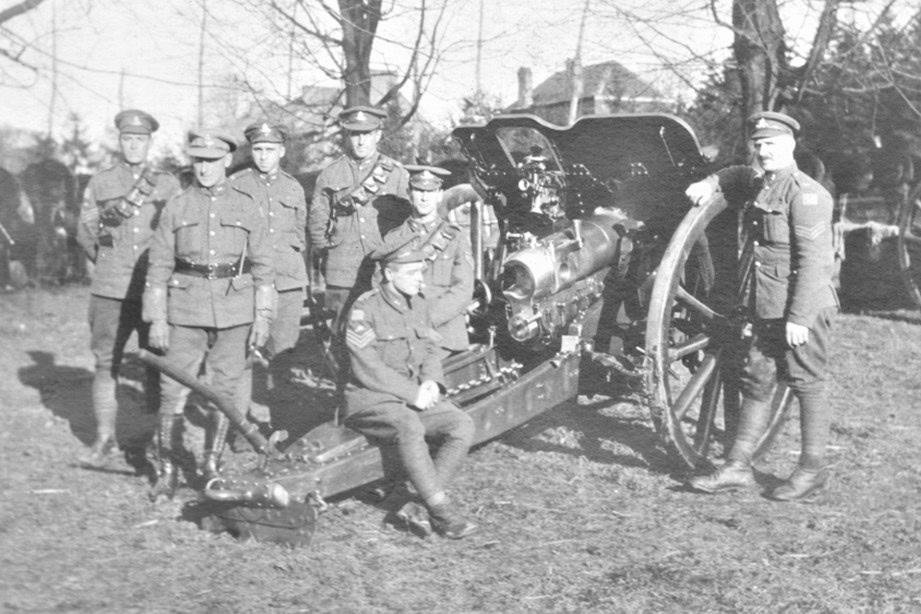
Officers and N.C.O.’s, 35th Battery with 4.5 Inch Howitzer – Mons – Nov 1918
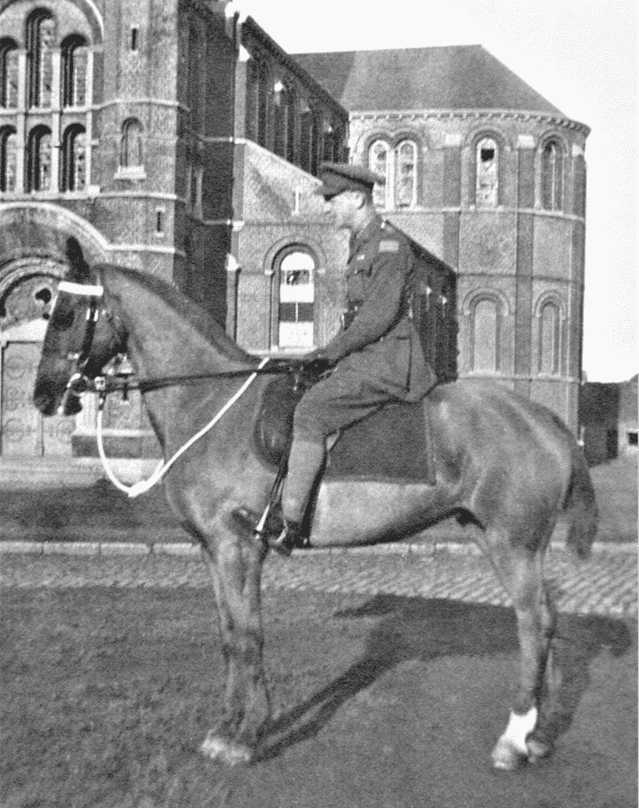
Captain George A. Downey on horseback – Mons – November 1918
In 1914, the Canadian Government created the Canadian Expeditionary Force (C.E.F.), a field force recruited from the civilian population to defend Canada overseas in the First World War. The C.E.F. existed within the Canadian Corps, composed of four Infantry Divisions, subdivided by Brigades, each with Infantry Battalions, Artillery Batteries and other specialized units attached. Canada recruited 260 Infantry Battalions and over 80 field and heavy artillery batteries. Most artillery recruits went to field batteries; a smaller number went to medium batteries and heavy batteries. Each C.E.F. field battery had four guns starting in December 1914, which increased to six guns in March 1917.
From 1914 to 1918, over 620,000 Canadians enlisted, with 425,000 going overseas to fight in the First World War. These soldiers fought in France and Belgium on the Western Front. The overwhelming majority enlisted as volunteers. Canada passed the Conscription Law in August 1917 – upwards of twenty-four thousand Canadian conscripts went to France starting in January 1918.
Minority populations volunteered for the C.E.F. with an estimated 3,500 First Nations, over 1,000 Black Canadians, and over 200 Japanese Canadians, in addition to other minority groups such as Ukrainians. They came from different backgrounds, and most had never served in a military force or active militia. At least half of the soldiers enlisted were born in the United Kingdom. French Canadians also participated in lower numbers, such as most of the volunteers from the 35th Battery recruited from Quebec.
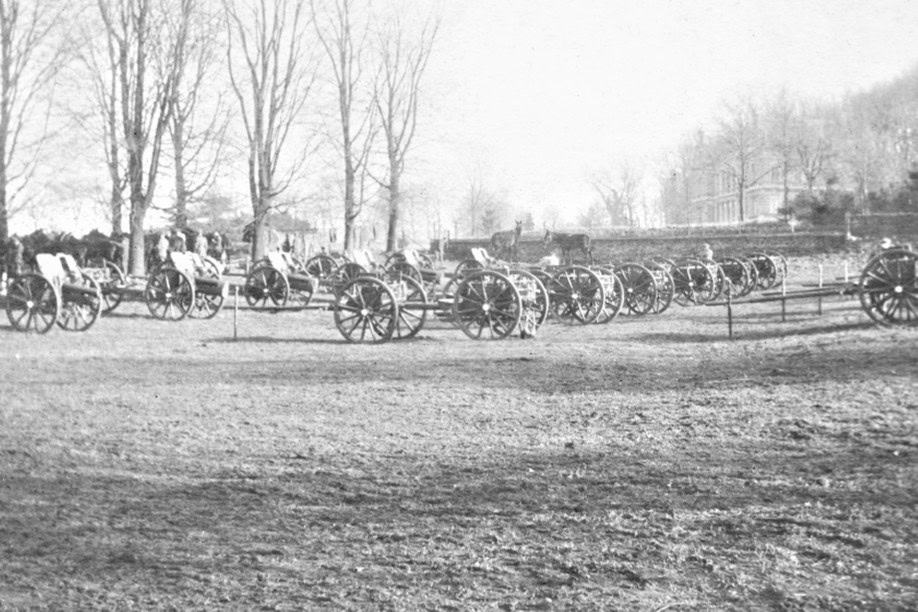
35th Battery, Gun Park – Mons – Nov 1918
In 1914, Canada accepted recruits between 18 and 45 years of age, with the average age being 26. Canada looked for healthy recruits at least 5 foot 3 inches tall (Gunners at least 5 foot 7 inches). Each recruit went through a strict medical exam. Canada rejected many due to failed medical. Common reasons for non-acceptance included flat feet, poor eyesight and rotting teeth. About twenty percent were married with children. Regardless of their status, they all accepted the terms of enlistment “to serve in the Canadian Over-Seas Expeditionary Force,” until the war ended.
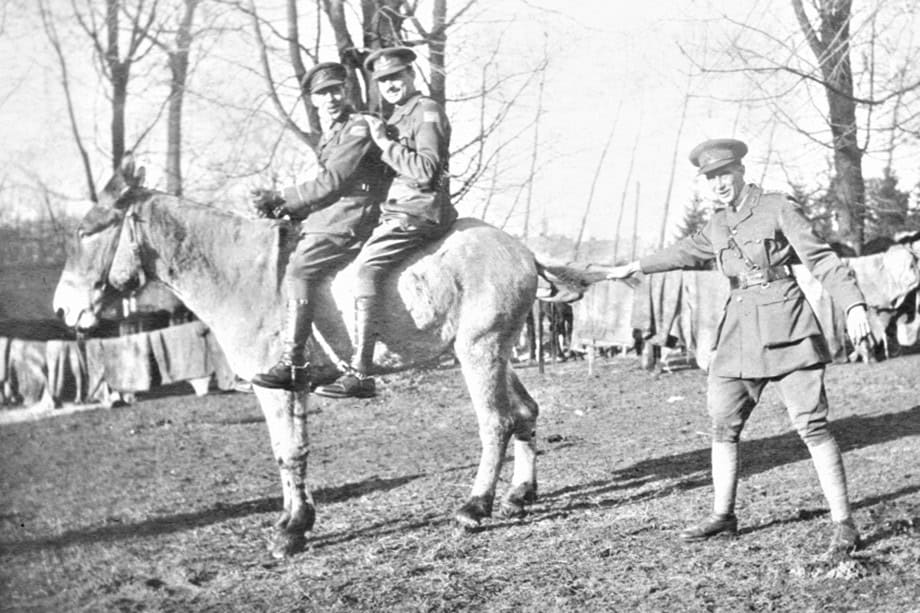
35th Battery Officers, Horse Lines – Mons – Nov 1918
The Canadian Artillery equipped approximately 25% of the Field Artillery with 4.5 Inch Howitzers during the First World War (1914-1918). Canada had eleven 4.5 Inch Howitzer Batteries, including the 35th Battery. After being raised, the 35th Battery spent two weeks in Montreal before moving to Valcartier for basic training, then shipped overseas to England, destined for France and Belgium. Staff at the RCA Museum display one example of a 4.5 Inch Howitzer. The 4.5 Inch Howitzer was in Canadian service from 1911-1941, replacing the B.L. 5 Inch Howitzer. This gun was the principal field howitzer during WW1. The 4.5 Inch Howitzer included:
- A rifled steel barrel;
- A sliding breech block;
- Smokeless powder;
- A hydro-spring recoil mechanism;
- Two-part cased ammunition for quick loading and re-firing.
The gun used a steel box carriage that enabled the barrel to rest between trails to a maximum elevation of 45 degrees. The high elevation allowed the howitzer to lob shells into enemy trenches. It could fire 16-kilogram ammunition to an effective range of 7 kilometres.
Comparable to other Canadian batteries, the 35th fought in many famous WW1 battles such as the Battle of Ypres (1915), the Battle of the Somme at Beaumont-Hamel (1916), the Battle of Vimy Ridge (1917), the Battle of Hill 70 and Lens (1917), the Battle of Passchendaele (1917), and the Last Hundred Days (1918). During the First World War, the C.E.F. lost 60,661 soldiers, representing over 9% of the total C.E.F. Postwar, Canada disbanded the C.E.F. and reorganized to a much smaller military force. Canada did perpetuate some of the unit numbers, battle honours and histories of C.E.F. units that had fought during the war.
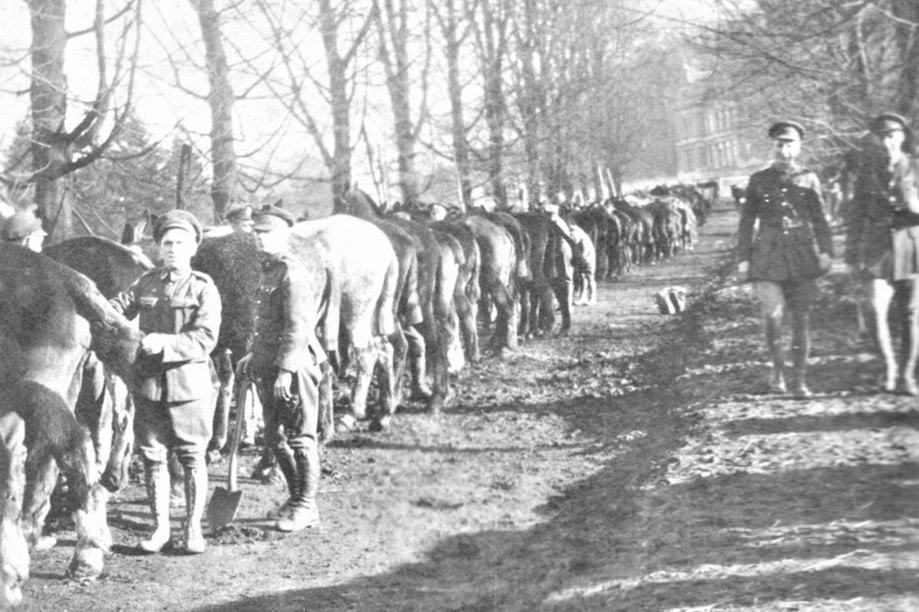
35th Battery, Horse Lines – Mons – Nov 1918
The Gunners of the 35th Battery enlisted for up to four years of service in France and Belgium. They went through “togetherness” in good times and bad times, firing their guns on the Western Front until the Armistice on 11 November 1918. The lucky ones returned home to start families, and in some cases, saved their wartime memories in old photo albums. We believe these photographs and the 4.5 Inch Howitzer help explain the history of the Canadian Gunner and are more than just relics of past conflicts. They take the place of Canadians that served long ago and stand as a reminder of our history and heritage.
By Andrew Oakden
